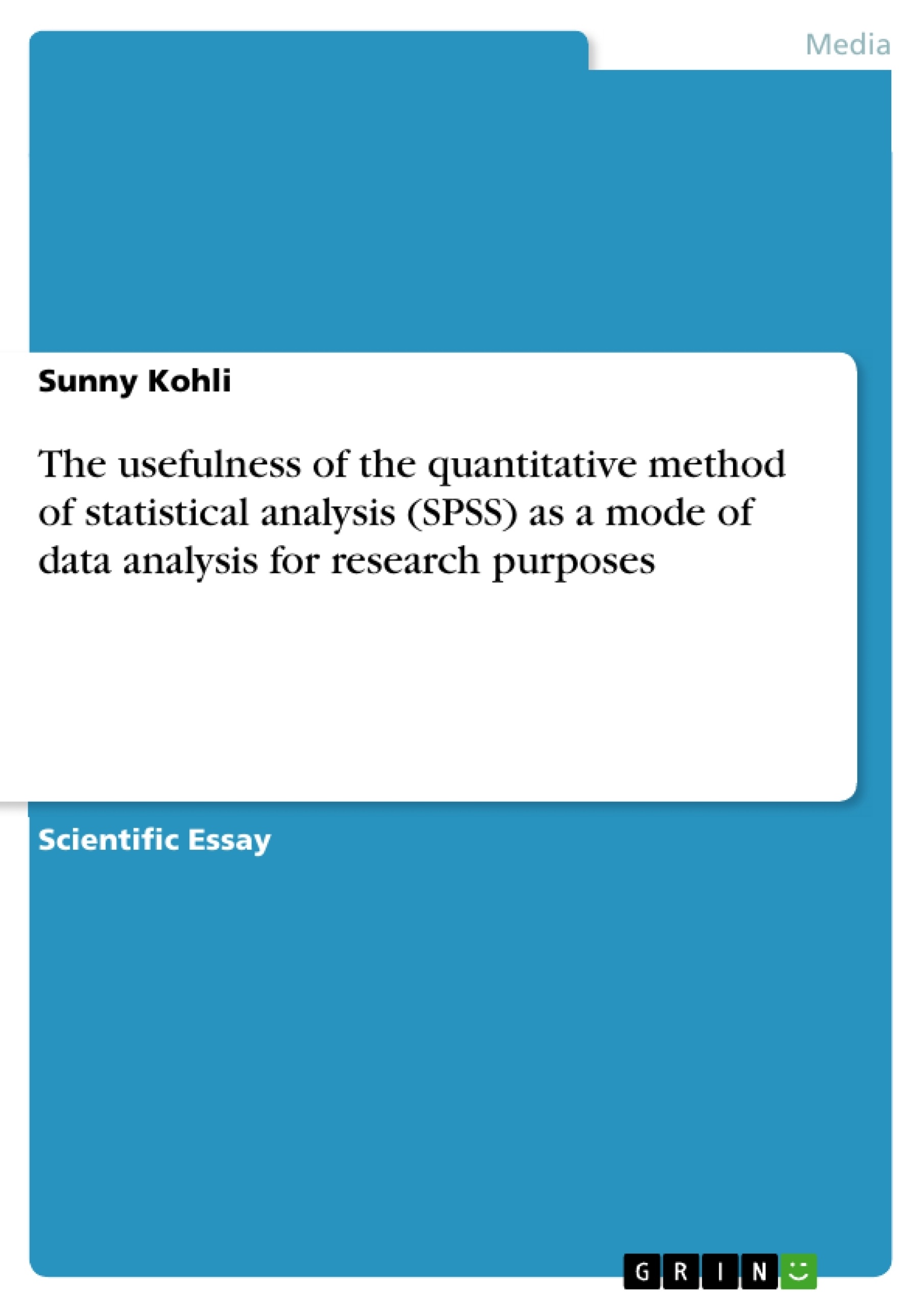This paper will look to analyse the use of the quantitative method of statistical analysis (SPSS) as a mode of data analysis for research purposes. It will aim to explain what is involved in the SPSS process by giving example to the Research Methods (RM) class dated 17th November 2010, ‘Fundamentals of Statistical Analysis I’, which involved the analysis of quantitative data through the use of the SPSS application. This will include what the exercise entailed, how data was generated for analysis using this method and how the method was executed. The discussion will then move on to describe some real life research question data that can be analysed using this method. The type of analysis to expect from SPSS will also be discussed. A discursive comparison of the SPSS method to the qualitative method of thematic analysis as a data analysis tool will be conducted at end of this paper; this will give light to the advantages and hindrances of the SPSS method.
Babbie et al, (2003) explain SPSS as a ‘vehicle for discovering differences and relationships in data’, they state:
“In many ways, SPSS is a vehicle for discovering differences and relationships in data, the same way a car is a vehicle for discovering places we have not yet visited…we plan the trip and set the directions. Similarly when we use SPSS, we choose the data we wish to explore and select the statistical procedures we wish to use…with SPSS commands. These commands instruct SPSS where to find our data, ways in which we want to modify the data, and the statistical procedures we want to use. (Babbie et al., 2003: 37)
Inhaltsverzeichnis (Table of Contents)
- The use of the quantitative method of statistical analysis (SPSS) as a mode of data analysis for research purposes
- The SPSS Process
- Workshop Exercise
- Data Generation
- Data Input and Analysis
- Real Life Research Questions
- Qualitative vs. Quantitative Research Questions
- Types of Research Questions
- Sampling
- Random Sampling
- Snowball Sampling
- Convenience Sampling
- Advantages of SPSS
- Precision and Lack of Ambiguity
- Data Summary and Standardisation
Zielsetzung und Themenschwerpunkte (Objectives and Key Themes)
This paper examines the application of SPSS as a quantitative data analysis tool for research purposes. It provides a practical example from a workshop and explores the process of using SPSS, including data generation and analysis. The paper then discusses the types of research questions suitable for SPSS analysis and examines different sampling methods. The advantages of using SPSS for quantitative data analysis are also highlighted.- The SPSS process for quantitative data analysis
- Types of research questions suitable for SPSS
- Sampling methods for quantitative research
- Advantages and limitations of SPSS compared to qualitative analysis methods
- The application of SPSS in real-world research scenarios
Zusammenfassung der Kapitel (Chapter Summaries)
The paper begins by introducing the SPSS method of data analysis. It describes a workshop exercise where students used SPSS to analyse pre-generated reaction times data. The exercise involved inputting data, executing commands, and analyzing descriptive statistics. The paper then explores the nature of research questions suitable for SPSS analysis, contrasting quantitative and qualitative approaches. It provides examples of research questions that would generate quantitative data suitable for SPSS analysis, emphasizing the need for measurable data. The author further discusses sampling methods, including random sampling, snowball sampling, and convenience sampling, highlighting the importance of choosing the appropriate method based on the research question and resources. The paper concludes by highlighting the advantages of using SPSS for analyzing quantitative data, emphasizing its precision, lack of ambiguity, and ease of summarizing and standardizing data.Schlüsselwörter (Keywords)
The main keywords and focus topics of the paper are SPSS, quantitative data analysis, research methods, data generation, sampling methods, random sampling, qualitative research, thematic analysis, advantages of SPSS, and data analysis tools. The paper focuses on analyzing the application of SPSS in research, exploring its strengths and limitations compared to qualitative analysis techniques.- Quote paper
- Sunny Kohli (Author), 2011, The usefulness of the quantitative method of statistical analysis (SPSS) as a mode of data analysis for research purposes, Munich, GRIN Verlag, https://www.grin.com/document/170289



